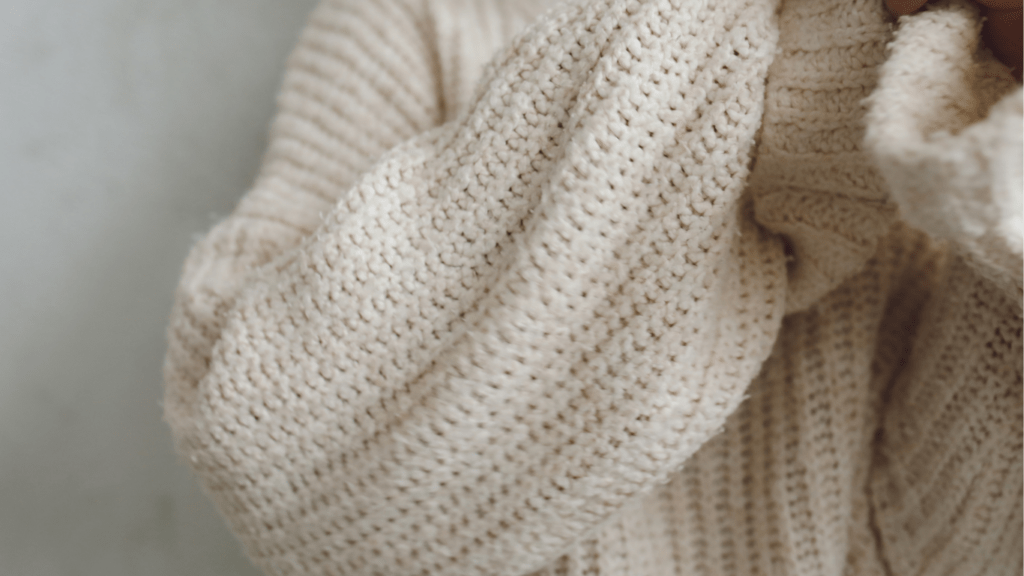What Makes Cashmere Sweaters Unique
Cashmere sweaters stand out because of their exclusivity and unparalleled characteristics. Understanding what makes them special involves exploring their origin, properties, and comparison to other types of wool.
The Origin of Cashmere Wool
Cashmere wool comes from the undercoat of goats native to the Himalayas, Mongolia, and China. These goats produce a fine, soft fiber called cashmere that protects them from harsh cold. Harvesting usually occurs during the molting season in spring when workers comb the undercoat to collect the fibers.
Unique Properties of Cashmere
Cashmere boasts a fine texture, unrivaled softness, and remarkable warmth. Fibers have a diameter of less than 19 microns, making them finer than even the softest merino wool. Despite being lightweight, cashmere provides exceptional insulation, offering warmth three times greater than other wool types. Its fibers are also naturally moisture-wicking, ensuring comfort in variable climates.
Comparison with Other Types of Wool
Cashmere offers distinct advantages over other wools, such as merino and alpaca:
- Softness: Cashmere is softer due to its finer fibers. While merino wool is also soft, it’s not as plush as cashmere.
- Warmth: Cashmere insulates better than other wools, including alpaca which is known for its warmth.
- Durability: Though delicate, high-quality cashmere becomes softer with age and doesn’t pill as easily as lower-grade wools.
This combination of origin, properties, and comparisons highlights why cashmere sweaters are considered the epitome of luxury in fashion.
Style and Versatility of Cashmere Sweaters

Cashmere sweaters offer unmatched elegance and versatility in fashion. From various designs to styling tips, they’re a staple for every wardrobe.
Various Designs and Patterns
Cashmere sweaters come in numerous designs and patterns, catering to different tastes. Popular styles include:
- Crew Necks: Classic and simple, perfect for layering.
- V-Necks: Versatile, suitable for casual and formal settings.
- Cardigans: Open-front, ideal for layering and easy to wear.
- Turtlenecks: Provide extra warmth, stylish for winter months.
- Cable Knits: Add texture and visual interest with intricate patterns.
Trending patterns feature stripes, color blocks, and even intricate embroidery. These designs make cashmere sweaters adaptable for various occasions.
How to Style Cashmere Sweaters
Styling cashmere sweaters is straightforward yet sophisticated. Here are some tips:
- Casual Look: Pair with jeans and sneakers for an effortlessly chic outfit.
- Office Wear: Combine with dress pants or a skirt, and add loafers for a polished appearance.
- Layering: Use a cashmere cardigan or crew neck over a button-down shirt or under a blazer.
- Accessorize: Scarves, statement jewelry, and belts enhance the overall look.
By choosing appropriate accessories and complementary clothing items, cashmere sweaters can seamlessly transition from day to night.
Cashmere Sweaters for Different Seasons
Cashmere sweaters are adaptable to different seasons, making them a year-round wardrobe essential. Here’s how:
- Winter: Turtlenecks and thick cable knits provide maximum warmth.
- Fall: Lightweight crew necks and cardigans offer comfort during cooler days.
- Spring: Thin V-necks and lightweight patterns are perfect for the mild weather.
- Summer: Short-sleeved or sleeveless styles are great for breezy evenings.
Layering cashmere with other materials ensures comfort and style regardless of the season.
Quality and Price Considerations
Evaluating the quality and cost of cashmere sweaters is essential when making a purchase. Here’s what to consider:
Factors Affecting Cashmere Quality
Several factors influence cashmere quality. Fibers’ length and thickness largely determine softness and durability. Longer, thinner fibers create softer, stronger yarn. The origin of the cashmere also matters; regions like Mongolia produce higher-quality cashmere due to harsher climates, resulting in finer fibers. The processing method impacts the final product. Hand-combed, multiple hand-sorted cashmere ensures the best quality, removing impurities and maintaining fiber integrity. Lastly, the ply of the yarn affects the sweater’s feel and longevity. Higher ply counts offer more insulation and strength.
Cost vs. Value: Is It Worth the Investment?
Cashmere sweaters often come with a higher price tag compared to other wool options. The investment pays off in several ways. First, cashmere’s exceptional insulation properties provide warmth without bulk, enhancing comfort. The material’s breathability allows for year-round wear, adding to its versatility. Investing in high-quality cashmere promises a longer-lasting product, reducing the need for frequent replacements. From a wardrobe perspective, cashmere sweaters offer timeless style, maintaining their appeal through changing fashion trends. Thus, the initial cost can be justified by the long-term value and benefits cashmere provides.
Care and Maintenance of Cashmere Sweaters
Proper care and maintenance can extend the life of cashmere sweaters, ensuring they remain luxurious and functional.
Washing and Drying Tips
Gently wash cashmere sweaters by hand. Use lukewarm water and a small amount of mild detergent. Avoid wringing or twisting the fabric to maintain its shape. Instead, carefully press out excess water with a towel. Lay the sweater flat on another towel, reshaping it, and let it air dry away from direct sunlight or heat sources.
How to Store Cashmere Sweaters
Store cashmere sweaters folded, not hung. Hanging causes stretching and deformation. Place the folded sweaters in a breathable cotton container or bag to prevent moth damage. Adding cedar balls, lavender sachets, or moth repellent helps to ward off pests. Keep them in a cool, dry place, avoiding damp locations.
Repairing and Restoring Cashmere
Small holes or tears need prompt repairing. Use a fine needle and matching cashmere yarn for best results. For pilling, gently remove the pills with a cashmere comb or a fabric shaver. If the sweater loses its shape, rewash and reshape it while damp, placing it flat to dry. Professional cleaning and repair services can handle significant damage.


 Creative Director at Divine Glamour Trail, is the visionary behind the platform, which is dedicated to bringing readers the latest trends in hairstyles, beauty, and skincare. With a passion for timeless fashion and expert style guidance, George provides tips, secrets, and updates that empower individuals to enhance their personal style. His platform is a go-to source for anyone looking to stay ahead in the fashion game, combining modern trends with timeless elegance to help readers feel confident and look their best.
Creative Director at Divine Glamour Trail, is the visionary behind the platform, which is dedicated to bringing readers the latest trends in hairstyles, beauty, and skincare. With a passion for timeless fashion and expert style guidance, George provides tips, secrets, and updates that empower individuals to enhance their personal style. His platform is a go-to source for anyone looking to stay ahead in the fashion game, combining modern trends with timeless elegance to help readers feel confident and look their best.
